Green is my favorite color. Shades of green always catch my eye.
But the vivid yellow green, damn near chartreuse color of filamentous green algae is a troubling sight when the goopy mess is clogging what should be a clear pool in one of your local feeder creeks. McCoy Creek was the afflicted stream.
Like so many feeder creeks east of the Great Divide, McCoy Creek begins its journey to larger streams and eventually into the Gulf of Mexico on rural private land. McCoy Creek starts as drainage from a cow pasture. The very tip of its headwaters is a steep drop from Ol’ Bessie’s feeding grounds down sandstone and shale bluffs and hardwood slopes into a deep hollow on Buck Mountain. “Hollow” is a Southern Mountain term for gorge, valley or ravine. And we actually pronounce it “holler” here in the Southern Mountains.
An understanding of basic ungulate metabolism, water solubility and gravity can tell you the rest of the story: cows eat grass, cows crap, rain breaks the crap down and gravity pulls all that crap-laden water downhill where the creek bed funnels it out to all of us.
Manure is full of nutrients, nitrogen and phosphorous being two of those, and the verdant explosion in the creek that is also a common malady in any stock pond is the product of this nutrient overload. Everything, including valued ecosystem nutrients, must be dispersed in balance.
Too much fertilizer leads to out of control algal blooms that can choke the life out of watery ecosystems in a couple of ways. First, the algae outcompetes other water plants. Then, when the algae uses up all the carbon dioxide in the water, it dies. Bacteria that feed on decomposing algae quickly reproduce and suck oxygen out of the water. This, of course, is bad news for any oxygen-fueled organism. It creates a dead zone.
This isn’t about cows. It’s about imbalances. I can imagine some of you saying: “But cows aren’t the only animals that shit in the creek.” That’s true, but you’ve got to understand that no native animals crowd themselves onto acreage like folks crowd cows. There’s a formula for how much biomass a piece of land can support, and cow pasture support is artificially inflated. We’re talking about a recommended four acres per cow and calf pair on moderately managed land here in Arkansas while one whitetail deer per five acres is considered high population density. Let me simplify it even more: a pair of bovines totaling about a ton on four acres versus one 100-175 pound cervid on five. And any country kid can tell you about the corresponding amounts of dung generated by each. It’s a false comparison. The bottom line is that cows generate a shit-ton of shit. And they generate far more shit than the pasture, surrounding woodlands and tiny McCoy creek can absorb.
Of course it’s not just cow manure. It’s also chicken and hog manure, and fertilizer runoff from crop fields and vanity lawns. And it’s not just little creeks that are affected. Water that starts its journey as a trickle on some foothill in Arkansas eventually ends up in the Gulf with several stops and nutrient deposits along the way. And rest assured that McCoy Creek is just one in thousands of other out-of-kilter creeks, brimming green with a fresh load of death-by-crap flowing downstream throughout the nation.
But algae is only the most visible sign of water pollutants and fertilizers are only the easiest target for criticism. There’s a long list of pollutants that show themselves in less obvious but still nefarious ways. In the Potomac River, scientists found male smallmouth bass that were developing premature egg cells. This has been traced back to estrogen exposure through released recycled sewage water. Researchers also found a list of other chemicals that were originally derived from products found on shopping lists — stuff like flame retardants, pesticides, and fragrances commonly found in products such as deodorants, soaps, antiperspirants and beauty products. Blood plasma analysis of 30 smallmouth from six sites showed that all the fish had at least one of those chemical pollutants in their blood.
All of this troubling on many levels. But perhaps most troubling is the general apathy. This narrative is so commonplace that we rarely raise an eyebrow until the story becomes so big and dramatic that we must pay attention. It takes a catastrophe like Flint, Michigan (a polluted river was the starting point for this ongoing tragedy), The Animas River poisoning by mine waste (bitch all you want about the EPA, but the pollution came from unregulated mining that is still a threat thanks to some antiquated Western mining laws put in place by President Grant) and of course the flaming Cuyahoga River of 1969 that led to establishment of the EPA. It took a river catching fire for this country to create an agency to look out for the health of our water and air.
We are slow, painfully slow, learners. We rarely notice anything until it slaps us in the face. And what makes matters worse is that we often grow complacent after a few “victories.” Yes, we’ve managed to get some regulations in place. Big damn deal. The most precious resource on this planet calls for more protection than a few regulations, and even those few barely stop anything.
My uncle tells stories about when he and my dad were young, that they would just take off in the hills, camping under rock overhangs and splashing away the heat of a summer’s day in the nearby creek. He said they never carried any water because there were so many springs and seeps with cool clear water ready to quench a boy’s thirst. That’s a life that seems like a fairytale to me as I watch algae fluttering in the currents of McCoy Creek. It’s a life I’ve never known.
But it’s a life I’d like to reestablish for my grandkids.




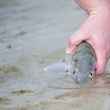



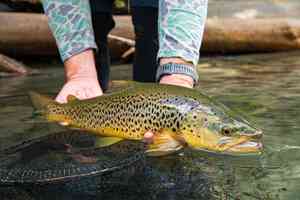


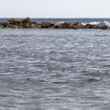




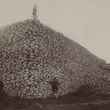







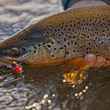

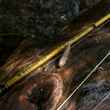
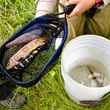

Comments
Al replied on Permalink
I believe your story, but it is completely anecdotal and happily ignores the millions of acres of wildlife habitat farmers have protected. If you don't believe me google NRCS and state BMP programs. There are problems with agricultural runoff, but farmland makes better habitat that subdivisions and urban sprawl. The problem with stories lacking facts is that there are well just stories.
Johnny Carrol Sain replied on Permalink
Al, I invite you to do just a quick Google search for fertilizer runoff pollution. The problem is far more prevalent and widespread than just my little corner of the world
What you've done here is used the red herring logical fallacy... or maybe a straw man... or maybe both. That farmland makes better wildlife habitat than subdivisions or urban sprawl is unquestioned (there's your straw man). Of course it does. That unregulated fertilizer runoff is poisoning our waterways is also unquestioned. Both of these are facts but they are unrelated facts.
Much as I wish it were so, water pollution is not "just a story."
Pages